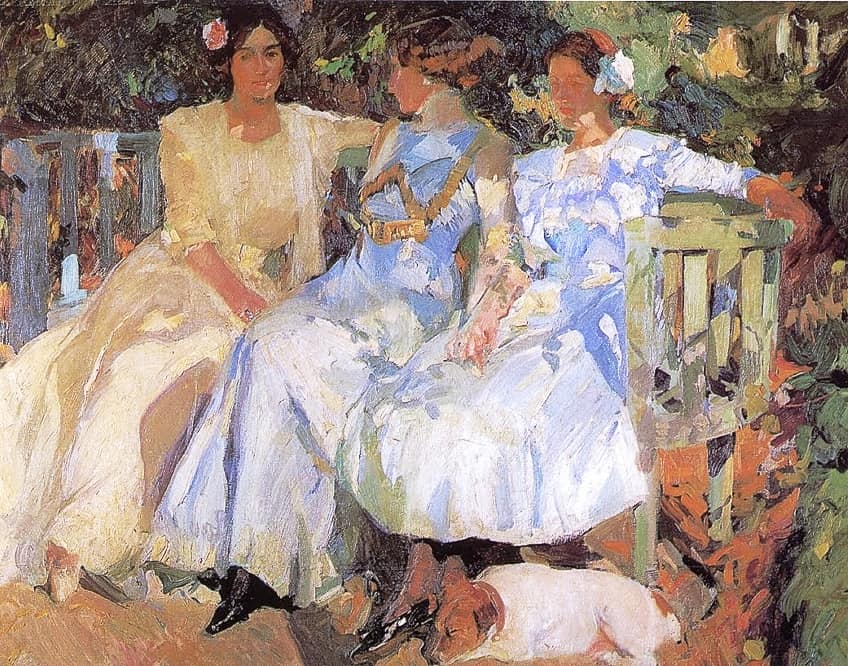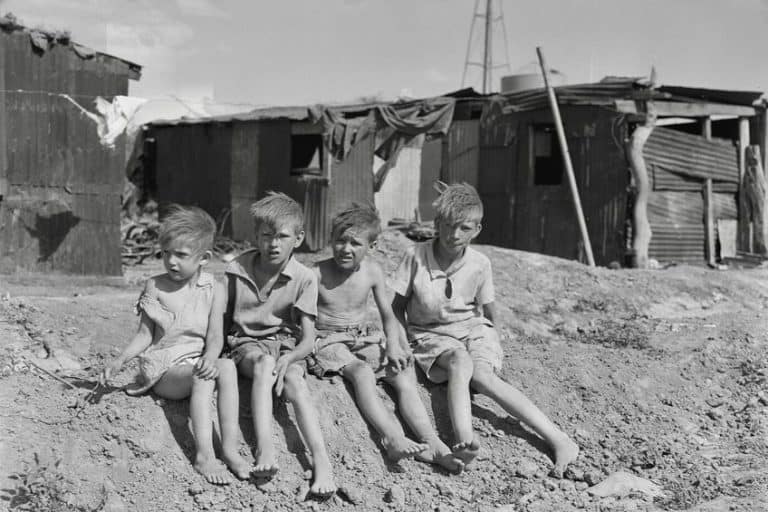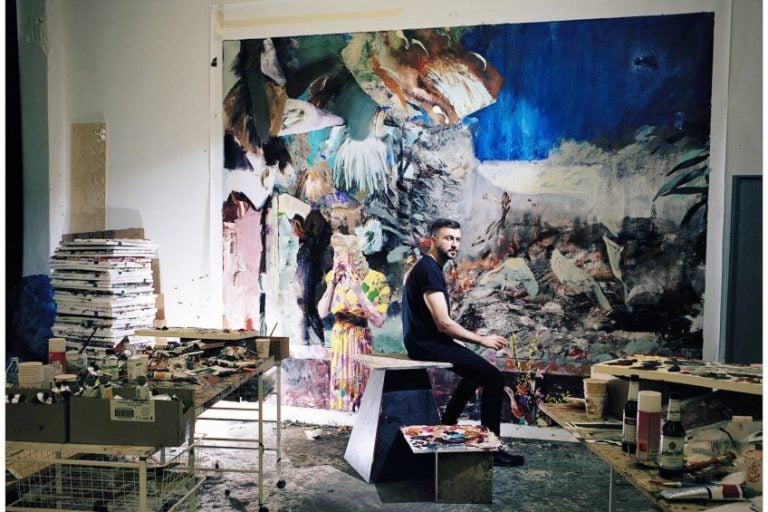Joaquín Sorolla – Honoring the Enduring Influence of His Art
Joaquín Sorolla, a luminary of Spanish Impressionism, captivated the art world with his mastery of light, color, and brushwork. Born in Valencia in 1863, Sorolla’s works are celebrated for their vibrant depictions of everyday life, sun-drenched landscapes, and evocative portrayals of Spanish culture. His keen eye for detail and ability to infuse ordinary scenes with a sense of grandeur earned him international acclaim during the late 19th and early 20th centuries. Join us as we delve into the life, artistry, and enduring legacy of Joaquín Sorolla, a visionary painter whose brushstrokes continue to inspire and enchant audiences worldwide.
Table of Contents
Key Takeaways
- Sorolla was celebrated for painting luminous Spanish landscapes and seascapes.
- He adopted an Impressionist style, creating works with dynamic light and color.
- Sorolla’s art is recognized for its cultural depiction of Spain during his era.

Early Life and Art Education
| Birth | February 27, 1863 |
| Death | August 10, 1923 |
| Place of Birth | Valencia, Spain |
| Genre of Work | Impressionism and Luminism |
| Notable Artworks |
|
Joaquín Sorolla y Bastida was a Spanish painter renowned for his ability to capture the transient effects of light in his works. Born on February 27, 1863, in Valencia, Sorolla is known for his vivid portrayal of the sunlit landscapes and seascapes of Spain, reflecting his mastery of light and shadow. His talent was multifaceted, excelling in painting portraits, landscapes, and genre scenes imbued with the bright, Mediterranean sunlight that became his signature element. Sorolla’s body of work stands out for its impressionistic style, marked by lively brushstrokes and a vibrant palette.
He painted en plein air, a practice characteristic of the Impressionists, which enabled him to observe and represent his subjects with immediacy and freshness.
From his cherished beach scenes of Valencia to grand historical themes, Sorolla’s oeuvre offers a rich glimpse into Spanish culture and society at the turn of the 20th century. This section delves into the defining aspects of Sorolla’s early life, his comprehensive art education journey, his profound admiration for Diego Velázquez’s works, and his pivotal development in Rome and Madrid, culminating in the importance of his personal life and family on his path to becoming an eminent painter.
Beginnings in Valencia
Joaquín Sorolla y Bastida was born on February 27, 1863, in Valencia, Spain. Tragedy struck early when he was orphaned by a cholera epidemic at the age of two. Despite these early hardships, Sorolla’s artistic inclinations were evident from a young age.

Artistic Training
A local tradesman, who was also his uncle, took notice of Sorolla’s talent and decided to nurture it. At the age of 15, he started formal art education at the Escuela de Bellas Artes de San Carlos in Valencia. He studied under masters Cayetano Capuz and Salustiano Asenjo.
A Fascination With Velázquez
During his initial training, Sorolla developed a profound respect for the works of Diego Velázquez. This admiration influenced his painting style, particularly his use of light and shadow, which became defining features of Sorolla’s later works.

Advancement in Rome and Madrid
Sorolla broadened his artistic education by moving to Madrid in his early twenties, where he studied master paintings at the Museo del Prado. Mentored by Francisco Pradilla, his talent was refined, which led to a four-year scholarship at the Spanish Academy in Rome.
There, alongside peers like José Benlliure, Emilio Sala, and José Villegas Cordero, Sorolla expanded his artistic vision.
Personal Life and Family
In Rome, apart from developing his artistic skills, Sorolla also met his future wife, Concepción Bastida, in 1888. Their marriage played a quintessential role in his personal and professional life. After completing his scholarship and a compulsory military service, Sorolla and Concepción settled in Madrid, starting a family that would later serve as subjects of many of his intimate paintings.

Artistic Career and Achievements
Joaquín Sorolla, a seminal figure in Spanish painting, left an indelible mark on the modern Spanish school of painting with his distinct style and celebrated works. His career encompassed national acclaim and international recognition, punctuated by a profusion of awards and honors.
Painting Style and Influences
Sorolla’s style, often likened to Impressionism, showcased a masterful handling of sunlight and water, earning him the moniker “master of light.” His technique involved swift, deft brushstrokes that captured the ephemeral quality of light with precision. Influenced by his time in Paris, Sorolla’s engagement with the Paris Salon and interactions with contemporaries like John Singer Sargent informed his approach to painting, with visible leanings towards Naturalism.

Prominent Themes and Works
Throughout his oeuvre, Sorolla explored themes revolving around the beach scenes and seashores of Valencia, his place of origin. Portraits, landscapes, and narrative historical themes also feature prominently. Noteworthy paintings include “The Return from Fishing,” exhibited in the Musée du Luxembourg in Paris, and “Portrait of Dr. Simarro at the Microscope.”
Another significant work is “Sad Inheritance,” depicting disabled children on a beach, which won him a Grand Prix in Munich and a prize of honor in Madrid.
National and International Exhibitions
Sorolla’s paintings received widespread acclaim at both the National Exhibition in Madrid, where he was frequently awarded the gold medal, and international exhibitions. His work, Another Margarita, won him a gold medal in Madrid in 1892, establishing his general fame. A definitive exhibition in the United States was hosted by the Hispanic Society of America in New York, showcasing the Vision of Spain, a monumental series that fortified his international reputation. His artwork is housed in prestigious collections including the Museo del Prado in Madrid.

Notable Joaquin Sorolla Artworks
Joaquín Sorolla, a preeminent figure in Spanish art, is renowned for his expertise in portraying light and everyday scenes with exceptional clarity. A number of his works have been celebrated globally, marking them as notable in the annals of art history. Valencia Beach is exemplary of Sorolla’s ability to capture the interaction of light and water. This artwork reflects his fascination with the Mediterranean coast and his skill in depicting the radiance of the Spanish sun. Walk on the Beach stands out for its portrayal of two women strolling along the shore.
Sorolla’s masterful brushwork crafts a scene that is both vivid and serene, showcasing his virtuosity in painting sunlight and its reflections.
Sad Inheritance is a poignant piece that distinguishes itself through its social commentary. It presents children with disabilities bathing in the sea as a form of therapy, highlighting Sorolla’s range in subject matter and his compassionate observation. Sorolla’s paintings are treasures that continue to attract admiration for their dynamic representation of life and landscape under the distinctive Iberian light. Each artwork encapsulates a moment in time, eternally preserved through Sorolla’s unique perspective and technical brilliance.
Sorolla’s Final Era
Joaquín Sorolla’s final years were marked by continued artistic productivity and a series of significant events that would shape his enduring legacy.

Late Period
During his late period, Sorolla continued to be prolific, though his style evolved to reflect a shift toward more intimate and introspective subjects. He focused on portraits, landscapes, and garden scenes, painting what he directly observed around him.
These works are often characterized by a softer, yet still luminous, quality of light compared to his earlier, more vivid compositions.
Death
Joaquín Sorolla passed away on August 10, 1923, in the town of Cercedilla, Spain. His untimely death at the age of 60 marked the end of an era for Spanish Impressionism, closing the chapter on a career that had brought him considerable fame and admiration both in Spain and internationally.

Legacy Left by Sorolla
Sorolla’s paintings left a significant legacy, capturing the vibrant light and life of Spain on canvas. His works can be found in numerous museums and galleries around the world. His former home in Madrid has been transformed into the Museo Sorolla, where many of his most important works and personal effects are on display.
This preserves his contributions to the art world.
Influence of Sorolla Today
The influence of Sorolla remains relevant today, as contemporary artists and art lovers continue to appreciate his mastery of light and color. His approach to painting outdoor scenes and capturing spontaneous moments has inspired generations of artists. Additionally, major exhibitions of his works continue to draw attention, showcasing the lasting appeal of his sunny seascapes and vibrant Spanish landscapes.

Joaquín Sorolla’s artistic legacy stands as a testament to his mastery of light, color, and the depiction of Spanish life. Through his vibrant paintings, Sorolla captured the essence of everyday scenes with a sense of grandeur and emotion, solidifying his place as a leading figure in Spanish Impressionism. His influence continues to resonate across generations of artists, inspiring new interpretations of light and color in art. Sorolla’s enduring impact reminds us of the timeless power of his work to evoke emotion, illuminate the human experience, and transcend cultural boundaries.
Frequently Asked Questions
What Is Joaquín Sorolla Primarily Known for in the Realm of Painting?
Joaquín Sorolla gained prominence for his genre paintings, portraits, and landscapes which are characterized by a blend of Impressionism with narrative elements. His adept use of impastoed paints to capture the shimmering light of the Spanish coast has earned him considerable acclaim.
Who Were Some of the Major Influences on Joaquín Sorolla’s Artwork?
Sorolla’s painting style was influenced by various schools of art, including Impressionism. The works of Jules Bastien-Lepage and Adolphe Monticelli, with their vivacious light and color, provided significant inspiration for his technique and artistic development.
How Have the Prices of Joaquín Sorolla’s Paintings Changed in the Art Market?
The art market has seen a fluctuating interest in Sorolla’s paintings over time. Since his death in 1923, the value of his works has undergone periods of both appreciation and decline. In recent years, the demand for Sorolla’s paintings has been robust, warranting significant prices at auctions and private sales, reflective of his lasting legacy in the art world.
Isabella studied at the University of Cape Town in South Africa and graduated with a Bachelor of Arts majoring in English Literature & Language and Psychology. Throughout her undergraduate years, she took Art History as an additional subject and absolutely loved it. Building on from her art history knowledge that began in high school, art has always been a particular area of fascination for her. From learning about artworks previously unknown to her, or sharpening her existing understanding of specific works, the ability to continue learning within this interesting sphere excites her greatly.
Her focal points of interest in art history encompass profiling specific artists and art movements, as it is these areas where she is able to really dig deep into the rich narrative of the art world. Additionally, she particularly enjoys exploring the different artistic styles of the 20th century, as well as the important impact that female artists have had on the development of art history.
Learn more about Isabella Meyer and the Art in Context Team.
Cite this Article
Isabella, Meyer, “Joaquín Sorolla – Honoring the Enduring Influence of His Art.” Art in Context. March 26, 2024. URL: https://artincontext.org/joaquin-sorolla/
Meyer, I. (2024, 26 March). Joaquín Sorolla – Honoring the Enduring Influence of His Art. Art in Context. https://artincontext.org/joaquin-sorolla/
Meyer, Isabella. “Joaquín Sorolla – Honoring the Enduring Influence of His Art.” Art in Context, March 26, 2024. https://artincontext.org/joaquin-sorolla/.











